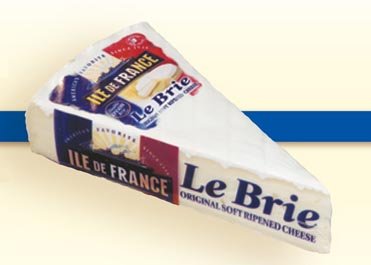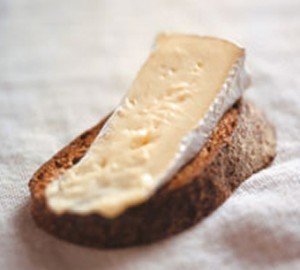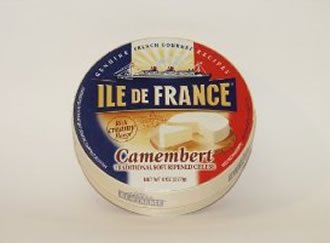My Favorite Things
Ile de France Camembert
At first glance, it’s hard to tell the difference between Brie and Camembert. Though Brie comes in pie wedges, in contrast to the full Camembert rounds, the two cheeses share more than not. Both are bloom-rinded, gently aged, soft French cheese, and a delicious version of each is brought to us by Ile de France, an American importer of French fromage. The difference between the two is subtle on first taste.
What sets them apart, though, becomes more apparent the more you taste. Not unlike French wines, the distinguishing mark is the terroir – the chemistry of the soil in which the grass-fed cattle grazed, the climate, the air quality.Whatever goes into the mix, Camembert is a stronger cheese than Brie. Tasted side by side with Ile de France Brie, the Camembert was distinctly buttery (rather than creamy – subtle but definite), slightly earthy, musty yet delicate. Pale yellow in hue (not unlike churned cream), the Camembert was a bit more solid than the Brie. It’s stronger flavor held its own in the spicy chili, but it would no doubt make an extravagant grilled Panini and a fine match for nuts. Because it comes in an uncut round, you can store it longer before slicing into it. But once you do, it won’t be around for long anyway because it’s so addictive.Best of all, both the Camembert and the Brie are available at Trader Joe’s.
Ile de France Brie
Living with Simon has been one long cheese palate evolution, and somehow, at some point along the way, Brie stepped up to the top of the list.
At first it was hard to get used to – the notion that I’d eat a rind, and one formed from mold, no less, gave me pause. But there are lots of tastes to be acquired in this world, and it’s hard to remember a time when I didn’t like Brie.
Ile de France, an American importer of French cheese, recently sent me samples of their Brie. This was the cheese that launched their company, in 1936. It’s currently available at Trader Joe’s, yet it passes for a specialty store product.

This is a soft-ripened cheese, minimally aged. Ile de France Brie is creamy, rich, sweet and mellow. The rind, unlike that of many of the Bries I’ve tasted, is only mildly sour, just enough to bring the cheese alive and impart a slightly chestnut-ty aftertaste.
Like most Brie, this is not really a cooking cheese. It does melt nicely though, and a slight heat gives it a viscous texture and brings its flavors to life. You could use it as a sauce or soup cheese. I’m also fond of Ile de France on thin crackers with fresh berries. Like the tomatoes, the berries have an acidity and a sweetness which both complements and balances the Brie.
Ancho and Aleppo from Penzey’s Spices
 When someone walks into my kitchen for the first time, inevitably they comment on my well-stocked spice basket. Almost all of those spices come from Penzey’s Spices (that is, if they weren’t harvested and dried from my own garden) because I’ve learned that I can rely on their freshness. Two that show up frequently are the Ancho and the Aleppo pepper.
When someone walks into my kitchen for the first time, inevitably they comment on my well-stocked spice basket. Almost all of those spices come from Penzey’s Spices (that is, if they weren’t harvested and dried from my own garden) because I’ve learned that I can rely on their freshness. Two that show up frequently are the Ancho and the Aleppo pepper.
Aleppo is the hot one of the pair. Sold in flakes, it presents an unapologetic kick. It’s a good kick though, made so by its complexity. Also known as a Halaby, this Turkish pepper is smoky and tart and unassuming. A pinch goes a long way.
The Ancho hails from New Mexico. Called Poblano when its fresh, this dried version is deep purple and rich. Penzey’s sells them whole and ground. I most often use the ground, shaking it pretty liberally into dishes that need some depth. It provides a good background base, and it’s mild and sweet. On the Scoville heat scale, the standard measure of a pepper’s heat, this one rates a gentle 3 (out of a possible 10).


